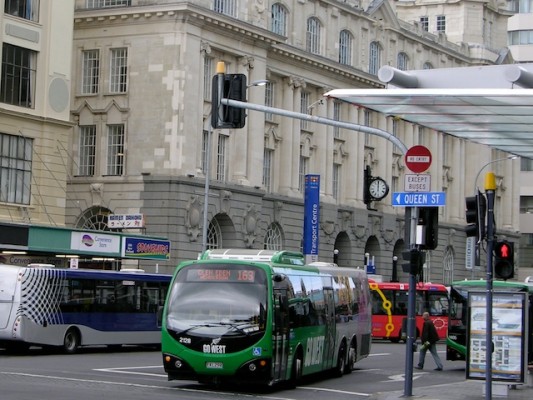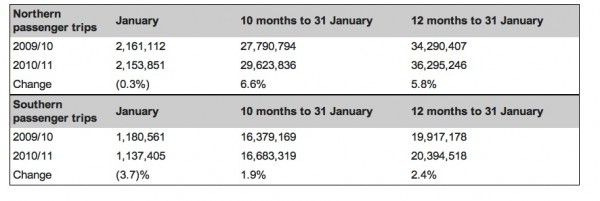Bus Patronage “Flat”
Auckland bus patronage was flat in January -and Wellington numbers have still not flocked back since the October bus fare increases there.
Infratil’s latest report says while NZ Bus remains on track to deliver annual patronage growth of 4% to 5% (about 2.5 million more passenger trips), in January Auckland patronage was flat (even though the Auckland rail services were disrupted over part of January).
The company says that in the next two months the patronage effect of the return to school/university, higher petrol prices and autumn weather will all be monitored carefully.
Wellington’s bus patronage remains a concern as the October fare increases continue to discourage commuters from using the buses.
The report says the Wellington region was still down post the October GWRC fare increases. These particularly reduced bus patronage in the Hutt, whereas some of the key Wellington services continue to show good growth.
“Work is ongoing to better understand the heterogeneous response to the fare rises. Where patrons are regular bus users it seems the fare rise has had relatively little reaction whereas one-off cash patrons seem have been discouraged.”
Back in December, NZ Bus reported the immediate effect of the Wellington fare increases:
“Wellington and Hutt traffic numbers have recently fallen away, in particular patronage seems to have been impacted by Greater Wellington’s October fare rises. NZ Bus analysis of the fare changes have indicated a mixed range of responses. There has been some move from cash payment to Snapper (the discount for using Snapper has increased and a patron previously paying cash could usually lower their cost of travel by moving to Snapper, notwithstanding the fare rises), but changes in travel demand have been inconsistent.”
I remarked that this was further proof fare increases drag people back to cars.
The Wellington fares went up on October 1 last year, the same day GST went up with the regional council there advising passengers it was council’s policy “that fares should make up between 45 and 50% of the costs.” The council said the increases comply with a new Government policy requiring that passengers pay a 50 per cent share of costs, with taxpayer and rate-payer subsidies paying the rest. The average increase was about 2.5% for GST, plus a further 3% to cover the increasing costs. However some increases were even higher.
It’s frustrating that Auckland Transport’s policy means we have no idea how rail patronage is going for the month.













5 Comments
Well it’s a poor service, until there are systems not competing with cars,it will remain underused and disappointing. Essentially until there is buy-in by the only authorities able to really make changes, MoT, NZTA, and MoF it will be ever thus.
Infratil is (at best) labouring under a misapprehension when it refers to the Wellington fare increases last October as being GWRC’s. While GW did increase the fares it controls, the most significant increases were imposed by Infratil through its abolition of the NZ Bus monthly Gold Pass and the daily Daytripper, with their replacements costing 35% & 50% more (albeit with increased availability, useful only if travelling in both Wellington and the Hutt Valley). The pricing of these passes is, bizarrely, outside GWRC’s control. The Gold Pass replacement was initially going to cost nearly twice the price, and it was only public pressure that forced Infratil to make a last-minute change.
In simple language does ” heterogeneous response to the fare rises” mean passengers are sick and tired of being ripped off by expensive public transport providers and clueless planners?
The fares rises that are putting more people in cars is, I assume, what the Minister of Transport was after anyway.
The cost to drive a vehicle since October has risen significantly more the fare increases on PT.
If we go on the assumption the PT users are turning back to cars due fare increases they are probably worse off.
Quality of service PLUS cost is putting people of bus travel in AK. With the exception of the Northern Busway bus travel has most of the disadvantages of car travel [all actually except one; you don't need to find a park] and none of the advantages. So until the rail network is more widespread, and /or the buses have real priority, integration, frequency, and speed, we will struggle to grow the ridership. Mostly, in AK bus riding is a slow, meandering, stuck-in-traffic experience AND getting more expensive. Why would that be a product most of us would buy?